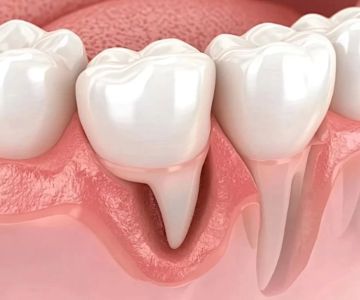What is a Dental Abscess and How to Treat It at Home?
- What is a Dental Abscess?
- Common Causes of a Dental Abscess
- Symptoms of a Dental Abscess
- How to Treat a Dental Abscess at Home
- When to Seek Professional Care
What is a Dental Abscess?
A dental abscess is a painful condition where pus collects in the tissue surrounding a tooth, often caused by a bacterial infection. These infections can arise in the tooth itself (periapical abscess) or in the gums (periodontal abscess). A dental abscess can be quite serious and requires attention to prevent the infection from spreading to other parts of the body.
The discomfort caused by a dental abscess is often sharp, persistent, and can sometimes radiate to the jaw or ear. If left untreated, the infection can worsen and lead to more severe complications. It's important to understand the causes and symptoms of a dental abscess to address it promptly.
Common Causes of a Dental Abscess
The primary cause of a dental abscess is an untreated bacterial infection. Common causes include:
- Poor Oral Hygiene: Inadequate brushing and flossing can lead to plaque buildup, which may cause infection.
- Cavities: Untreated cavities can lead to deeper tooth decay, which can become infected.
- Gum Disease: Periodontal disease can cause infection in the gums and surrounding tissues, leading to abscess formation.
- Trauma to the Tooth: A cracked or chipped tooth can allow bacteria to enter, causing infection and abscess.
Symptoms of a Dental Abscess
Recognizing the symptoms of a dental abscess is crucial for prompt treatment. Some common symptoms include:
- Severe Tooth Pain: Often throbbing or sharp pain, especially when chewing or applying pressure.
- Swelling and Redness: Swelling may occur on the gums or face near the affected tooth.
- Bad Taste or Smell: A foul taste or smell may result from pus draining from the abscess.
- Fever: A low-grade fever may accompany the infection, indicating your body is fighting it.
- Sensitivity to Hot or Cold: Pain may worsen when exposed to hot or cold temperatures.
How to Treat a Dental Abscess at Home
If you experience a dental abscess, it's important to act quickly to relieve pain and prevent the infection from worsening. While professional dental treatment is necessary, there are several home remedies you can try to ease discomfort in the meantime:
- Saltwater Rinse: Rinse your mouth with warm saltwater to help reduce swelling and draw out the infection.
- Cold Compress: Applying a cold compress to the affected area can help reduce swelling and numb the pain.
- Over-the-Counter Pain Relievers: Medications such as ibuprofen or acetaminophen can help alleviate pain and reduce inflammation.
- Clove Oil: Known for its natural analgesic properties, clove oil can be applied directly to the abscess to relieve pain.
- Hydrogen Peroxide Rinse: Diluting hydrogen peroxide with water and using it as a mouthwash can help disinfect the area and reduce bacteria.
These remedies can provide temporary relief, but they don't treat the root cause of the infection. It’s essential to see a dentist for proper care.
When to Seek Professional Care
Although home remedies can ease discomfort, a dental abscess typically requires professional dental treatment. You should see a dentist if:
- The abscess doesn’t improve after a few days of home treatment.
- You experience severe pain that can't be relieved by over-the-counter medication.
- You develop a fever, chills, or swelling in your face or neck.
- The infection spreads to other areas, such as your jaw or lymph nodes.
Your dentist may need to drain the abscess, prescribe antibiotics, or perform a root canal to eliminate the infection. In some cases, extraction of the affected tooth may be necessary.







 Westgate Dental Arts
Westgate Dental Arts Coventry Family Dental
Coventry Family Dental Familia Dental
Familia Dental Dr. Daniel S. Fife, DDS
Dr. Daniel S. Fife, DDS Dentistry At Suburban Square: Michael I. Wollock, DMD
Dentistry At Suburban Square: Michael I. Wollock, DMD Comfort Care Dental
Comfort Care Dental The Importance of Oral Health Education During Pregnancy for a Healthy Pregnancy
The Importance of Oral Health Education During Pregnancy for a Healthy Pregnancy Why Skipping Dental Checkups Can Lead to Bigger Oral Health Problems
Why Skipping Dental Checkups Can Lead to Bigger Oral Health Problems Advantages of Porcelain Dental Restorations
Advantages of Porcelain Dental Restorations Best Tips for Brushing Your Teeth Properly for Healthy Gums: Essential Techniques for Oral Health
Best Tips for Brushing Your Teeth Properly for Healthy Gums: Essential Techniques for Oral Health How Can Diabetes Cause Tooth and Gum Problems? Preventing and Managing Oral Health Issues
How Can Diabetes Cause Tooth and Gum Problems? Preventing and Managing Oral Health Issues Healthy Habits for Promoting Good Oral Health and Hygiene: Tips for a Healthy Smile
Healthy Habits for Promoting Good Oral Health and Hygiene: Tips for a Healthy Smile